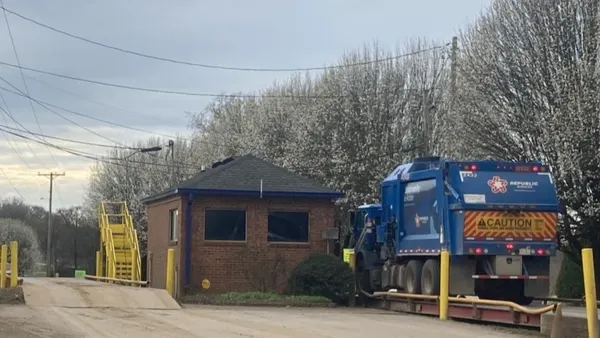Dive Brief:
- Nitrogen oxide emissions reduction regulations, which took effect on Jan. 1 in California's South Coast Air Quality Management District (AQMD), are making it harder for some companies to profit from landfill gas-to-energy operations in the state, as reported by the Los Angeles Times.
- Waste Management decided to switch back to flaring gas at its El Sobrante Landfill in Riverside. Energy recovery has also been stopped at the company's Simi Valley site because it couldn't compete with other renewable power prices.
- California has 81 landfills which produce energy, making the state a national leader, though it also has some of the nation's highest greenhouse gas emissions from waste operations.
Dive Insight:
According to the most recent data from the Environmental Protection Agency's (EPA) annual Greenhouse Gas Reporting Program, municipal landfills account for 81.3% of all reported waste-related emissions. Methane has become a national priority and California Governor Jerry Brown recently signed a new law requiring 40% reduction in emissions by 2030.
Nitrogen oxides aren't usually a main part of climate change discussions and the AQMD is separate from the state agency which focuses on such issues. As a result, the separation between these various policies has caused confusion and potentially led to some unintended consequences since flaring landfill gas can also produce more carbon dioxide.
Despite these challenges, recovering energy from landfill gas is still seen as profitable for some companies and multiple projects have been announced in the state recently. Ener-Core has been contracted by Los Angeles to install new equipment at the closed Toyon Canyon Landfill in Griffith Park which can recover low-quality gases. The technology was even attractive enough that Dresser-Rand, owned by Siemens, worked out a deal for the exclusive rights to produce it.









